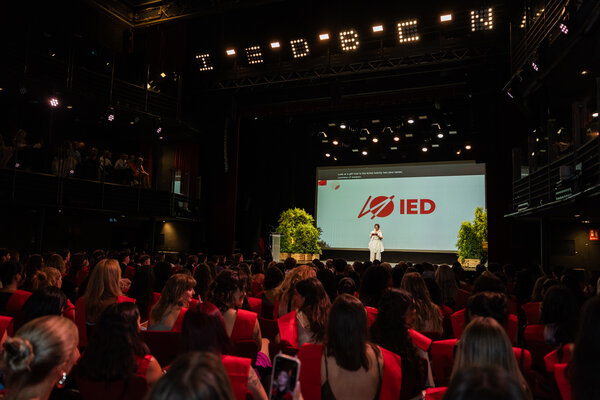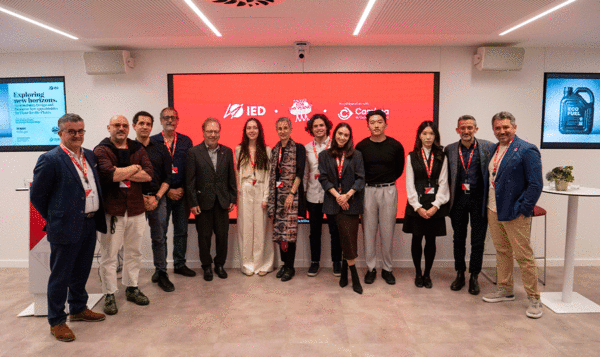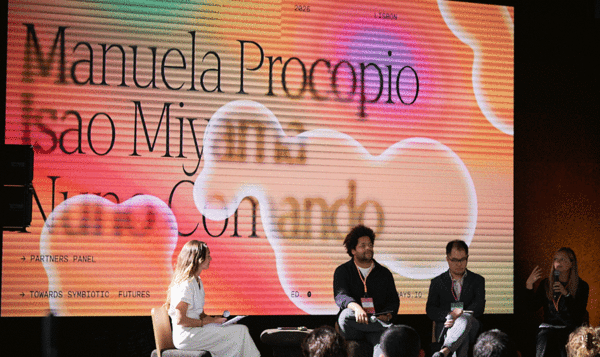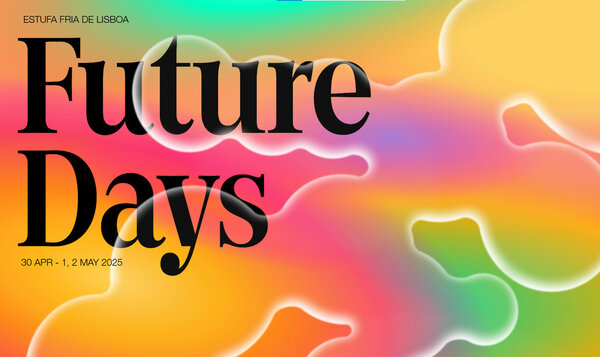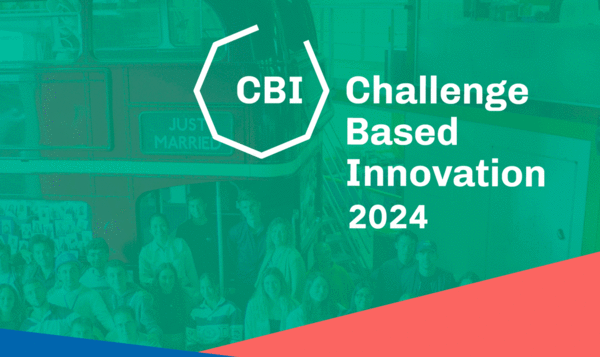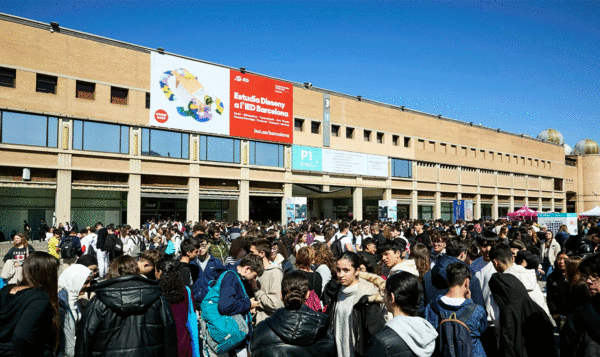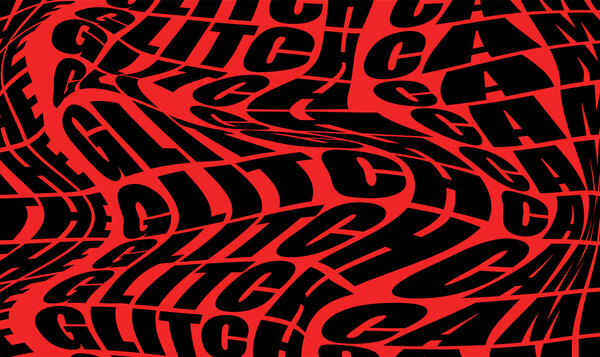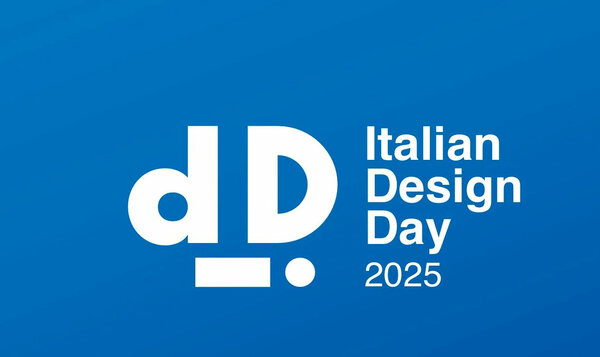The global design compass to face future challenges, discover macro- and micro-trends shaping the world, and find inspiration to innovate and create advanced design solutions.
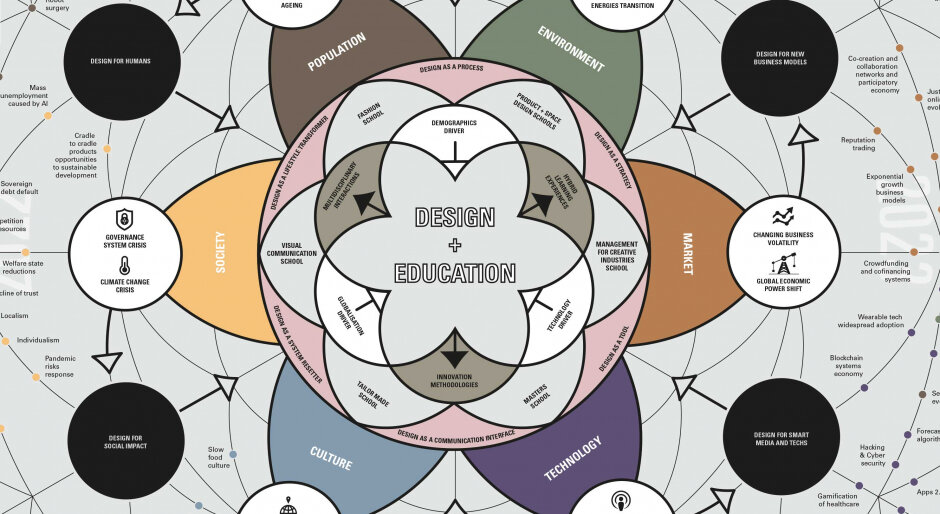
Deflexor 2033
Date
07 February 2018
In a changing, ever-evolving scenario, Alessandro Manetti presents Deflexor 2033, a compass that, based on micro- and macro-trends, draws a map capable of meeting the current challenges posed by the world we live in. Deflexor was created as an indispensable tool for articulating the projects that will shape the future through design thinking.
Deflexor 2033 is a macro-trend map of the future developed for scenarios to which design applies. It results from the continuous academic research IED Barcelona has carried out over the last ten years and is presented as a global and dynamic compass. This tool aims to facilitate the use of insights into macro-trends by institutions related to Design teaching to guide design-driven innovation through academic projects developed by students over the next 15 years.
Deflexor consists of three megatrend drivers, 12 macro-trends and a constellation of several examples of micro-trends. The three drivers are the transformational factors on a global scale that have played a significant role in the major changes in every period of human history since the beginnings of civilisation: demography, technology and globalisation. We have defined macro-trends as prolonged and large-scale changes in people’s interests or lifestyles in the economic, cultural, human, technological or environmental spheres.
Deflexor was designed from six pairs of interconnected global changes, resulting in a worldwide design application scenario.
-
The acceleration of urbanisation and the consequent increase of new megalopolis (cities with more than 10 million inhabitants), combined with the demand for alternative energies, especially by users belonging to the younger generation, creates a design application scenario called “Design for Sustainable Development”.
-
The increased unpredictability of traditional, increasingly commercially connected business models and the movement of capital, people and information (data and communication), coupled with the transfer of global economic power from Europe and the United States to the Far East, creates a design application scenario called “Design for New Business Models”.
-
Hyperconnectivity is the trend relating to the use of multiple means of communication in addition to interpersonal contact: e-mail, text messaging, mobile phones and Web 3.0 information services. The exponential acceleration of reach, scale, and economic impact of revolutionary materials and technologies accompanies this macro-trend. This pair of macro-trends creates a design application scenario called “Design for Intelligent Media and Technologies”.
-
The standardisation trend corresponds to the cultural homogenisation resulting from increased interaction between people due to the increased international flow of ideas, lifestyles and culture. It is associated with the antithetical macro-trend: personalisation, i.e. the growing human need to receive communications and obtain personalised and individualised services and products. This pair defines a design application scenario called “Design for Cultural Complexity”.
-
The crisis of traditional governance systems is the macro-trend referring to losing trust in politics and conventional politicians due to increased direct and transparent communication and public management mechanisms based on technocratic platforms. This macro-trend is associated with the consequences of climate change on society, as ecological and social emergencies emphasise the crisis of traditional public management models. The public debt crisis that afflicts most countries worldwide and limited resources are also sources of social tension. All this creates a design application scenario called “Design for Social Impact”.
-
The macro-trend of population ageing, i.e. the increase in life expectancy of the world’s population due to improvements in health, medicine and living conditions, is coupled with the macro-trend of population explosion and higher birth rates in specific areas, such as Africa or India. This pair of macro-trends creates a design application scenario called “Design for People”.
The Deflexor macro-trend map is a dynamic compass that can also be used as a methodology to help encourage and adopt Design-oriented innovation in companies and organisations. It has been conceived for institutions related to design education and, in particular, as it is known, for the academic projects carried out during the first 15 years of IED Barcelona. For this reason, the core of the map contains the six departments of IED Barcelona: Fashion, Visual Communication, Management for Creative Industries, Design (spaces, transport and product), Master courses and Tailor-Made courses.
The Design education sector cannot ignore these 12 macro-trends in future courses. In turn, it must be able to contribute to offering solutions for the various scenarios, applying the methodologies of innovation and design thinking, hybrid training experiences (combining training and consultancy for individuals and companies) and transdisciplinary interactions. The design methodology finds application in these scenarios in more than one form: design can be used as a simple aesthetic or functional tool, as a strategy, as a holistic procedure, as a factor that motivates the system, as a lifestyle transformation agent or, simply, as a communication interface.
Start-ups can also use the Deflexor map. A new entrepreneurial initiative must represent a commitment to the future that meets the customer’s current needs and desires and can also anticipate them. Design- and macro-trend-driven innovation can be more effectively directed towards an increasing understanding of the collective intelligence in insights of future users.
Author: Alessandro Manetti
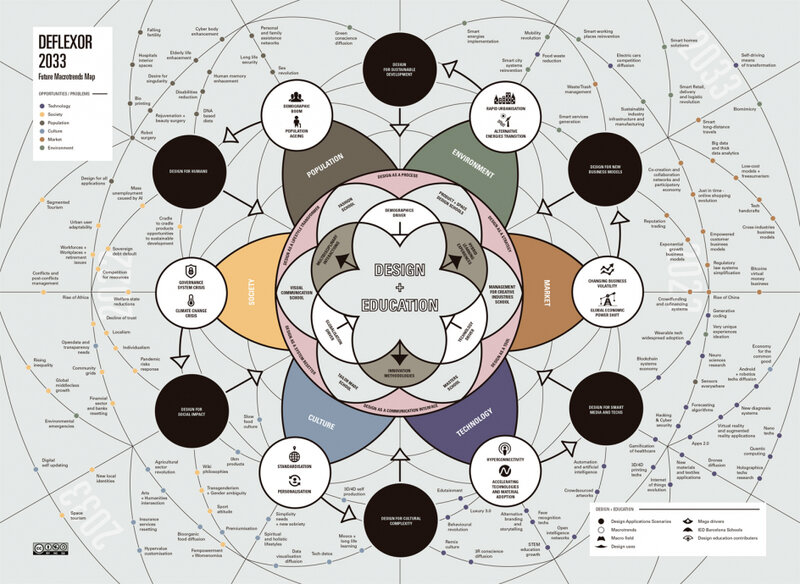
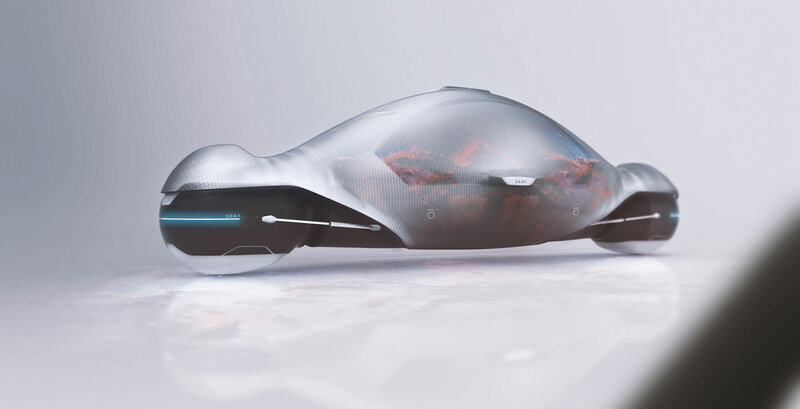
SEAT Mergo
SEAT Mergo, designed as a transport service adapted to the needs of the cities of 2035. It is an individual vehicle for shared use that collects big data through the city’s WiFi zones and analyses users’ requests to take them to their destination. It also contains a system to personalise the service and establish a direct emotional connection with the user.
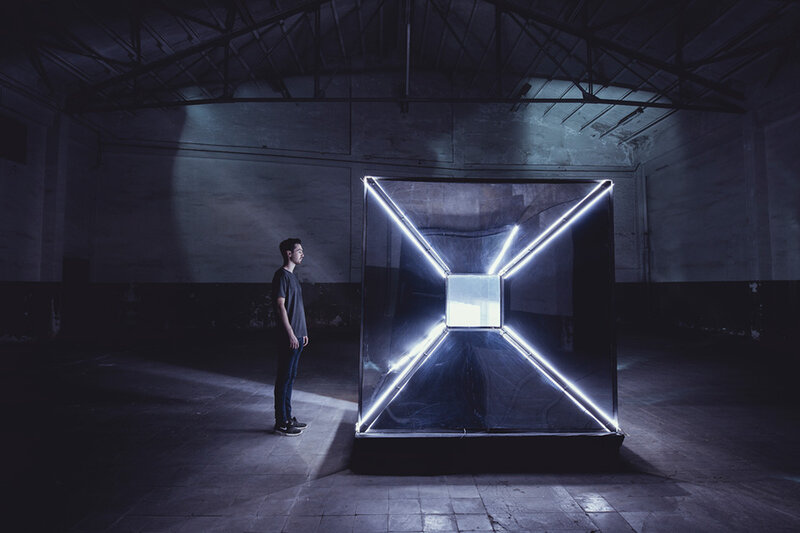
WORDS
WORDS is an interactive installation in which the audience’s words take shape in light forms, depending on their intensity and duration. The voices of various people are recorded in the installation, creating a unique visual composition. The project was presented at the Sónar Festival in Barcelona (Sónar+D) in 2017.
